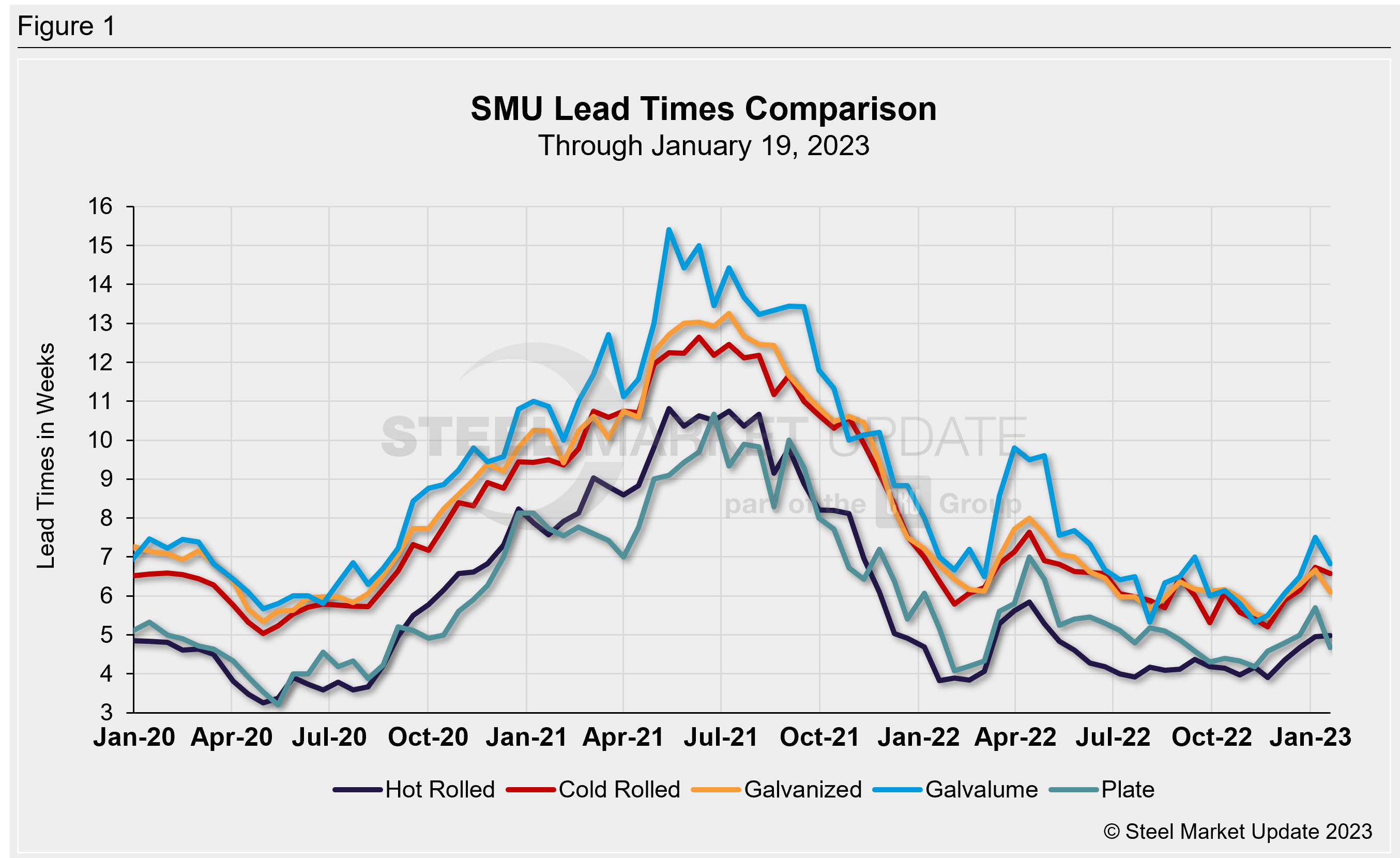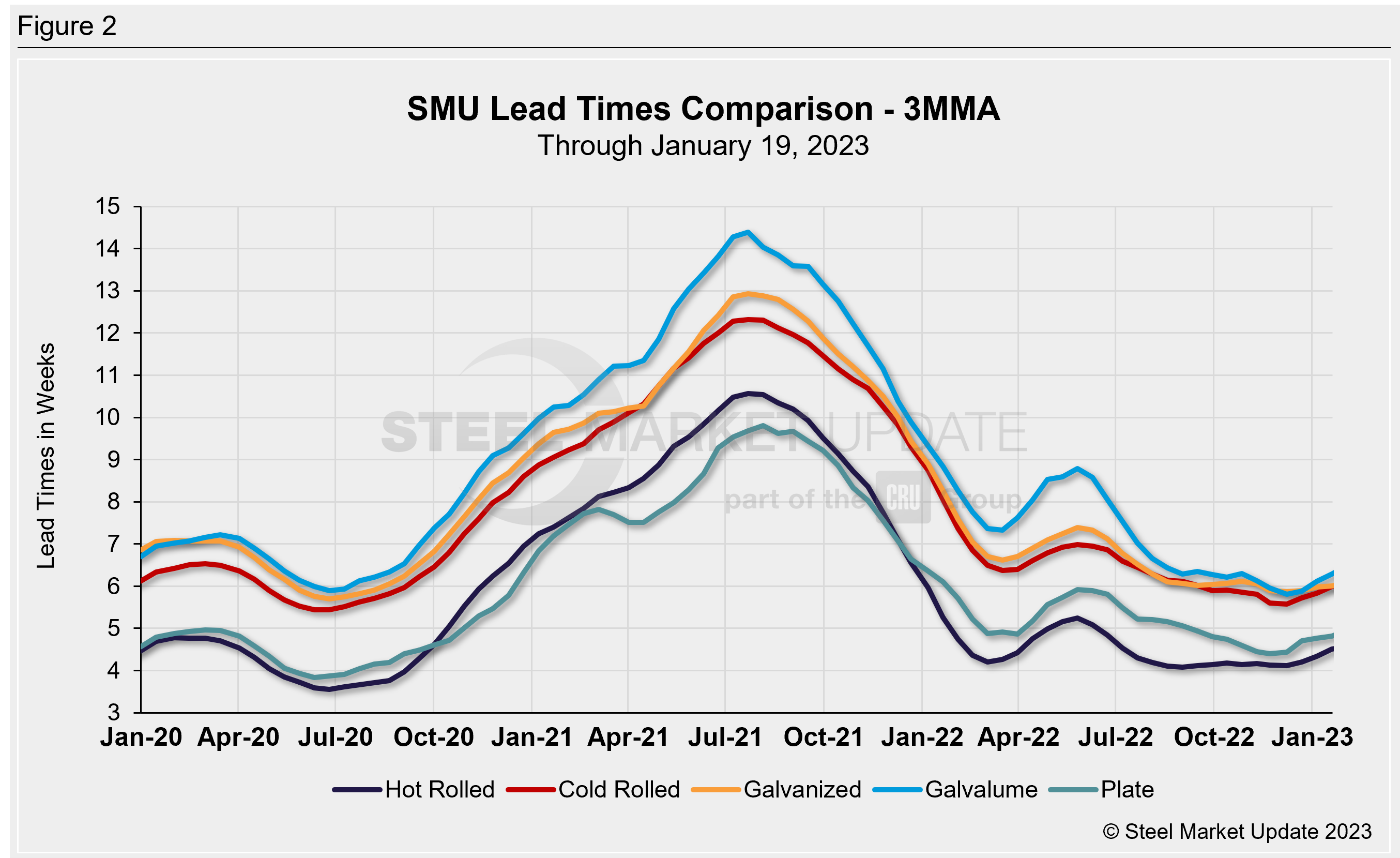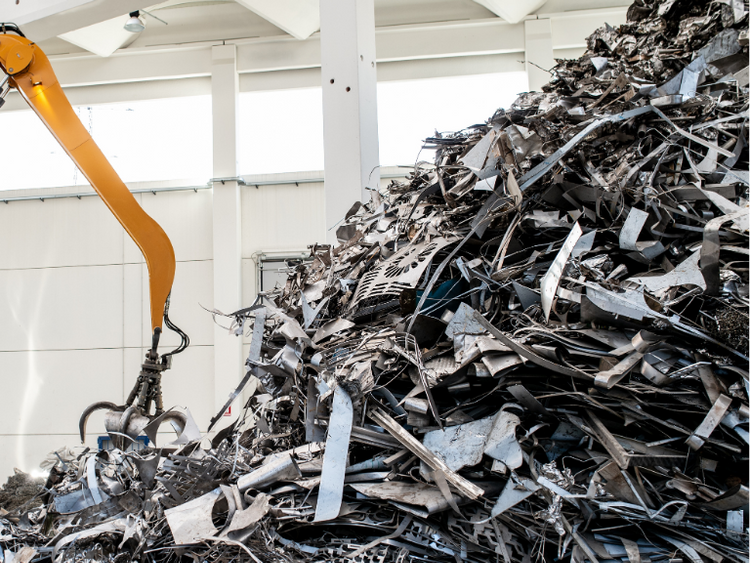Steel Mills
Sheet Lead Times Flat to Down, Plate Sees Biggest Drop
Written by Becca Moczygemba
January 19, 2023
Steel mill lead times were flat to down this week, declining by an average of 0.5 weeks across all five products we track.
Steel buyers reported mill lead times ranging from 4 to 6 weeks for hot rolled and plate, and 5 to 8 weeks for cold rolled, galvanized, and Galvalume.
SMU’s hot-rolled lead time is approximately 5 weeks, little changed from our prior check of the market two weeks ago but up from 3.90 weeks in late November. The shortest hot-rolled lead time recorded in the last 12 months was 3.83 weeks in mid-January 2022.
Cold-rolled lead times remained relatively flat at about 6.57 weeks, down 0.16 weeks versus two weeks ago. Cold-rolled lead times are nonetheless up from 5.21 weeks in late November, when they hit their lowest point since May 2020.
Galvanized lead times dropped more significantly to 6.10 weeks. That’s down 0.57 weeks from 6.57 week in early January and roughly in line with levels we saw in early December.
Galvalume lead times were 6.83 weeks on average, down 0.67 weeks from two weeks ago. Note that Galvalume figures can be volatile due to the limited size of that market and our smaller sample size.
Plate lead times sank 1.03 weeks to 4.67, their lowest reading since late November. In early November, plate lead times were 4.2 weeks—the lowest lead time recorded since February 2022 (4.1 weeks).

When asked about the future direction of lead times, 55% of executives responding to this week’s questionnaire reported that they expect lead times to be relatively flat into March. This is down from 65% in our previous survey. Thirty-two percent think lead times will extend, up from 26% two weeks ago. Nearly 13% expect lead times to contract, in line with results from as far back as late October. Premium members can view a longer history of this data series and others by exploring the market trends report.
Looking at lead times on a three-month moving average (3MMA) basis can smooth out the variability in the biweekly readings. As a 3MMA, lead times for all products were flat compared to early January. The latest 3MMA lead time for hot rolled inched up to 4.5 weeks. Cold-rolled lead times also moved up to six weeks. Galvanized lead times remained at six weeks, while Galvalume lead times increased to 6.3 weeks. Plate lead times remain at 4.8 weeks.

Note: These lead times are based on the average from manufacturers and steel service centers who participated in this week’s SMU market trends analysis. SMU measures lead times as the time it takes from when an order is placed with the mill to when the order is processed and ready for shipping, not including delivery time to the buyer. Our lead times do not predict what any individual may get from any specific mill supplier. Look to your mill rep for actual lead times. To see an interactive history of our Steel Mill Lead Times data, visit our website here.
By Becca Moczygemba, Becca@SteelMarketUpdate.com

Becca Moczygemba
Read more from Becca MoczygembaLatest in Steel Mills

Nucor profits jump in Q3, but company cautions on Q4 outlook sequentially
Nucor’s profits more than doubled in the third quarter year over year, but the company expects Q4’25 to be lower sequentially.

SDI announces proprietary low-carbon EDGE products
Steel Dynamics has announced lower-embodied-carbon steel products BIOEDGE and EDGE, and expects “immediate interest” from several markets for some of the offerings.

Wheeling-Nippon Steel raises Galvalume coating extras
The steelmaker released updated extras to customers on Oct. 15, marking the second adjustment in just six weeks following their early September revision

Cliffs offloading some FPT assets, considering HBI plant sale as well
Lourenco Goncalves confirmed that Cleveland-Cliffs is actively selling off portions of its Ferrous Processing and Trading (FPT) assets. Its direct reduction plant in Toledo, Ohio, may also be up for grabs...

SSAB cites US strength but flags tariff-driven uncertainty
The Americas segment of Swedish steelmaker SSAB delivered a stable third quarter, but with weaker shipments and continuing cautious demand. Plate prices held, but tariffs, slowing end-user demand, and...
